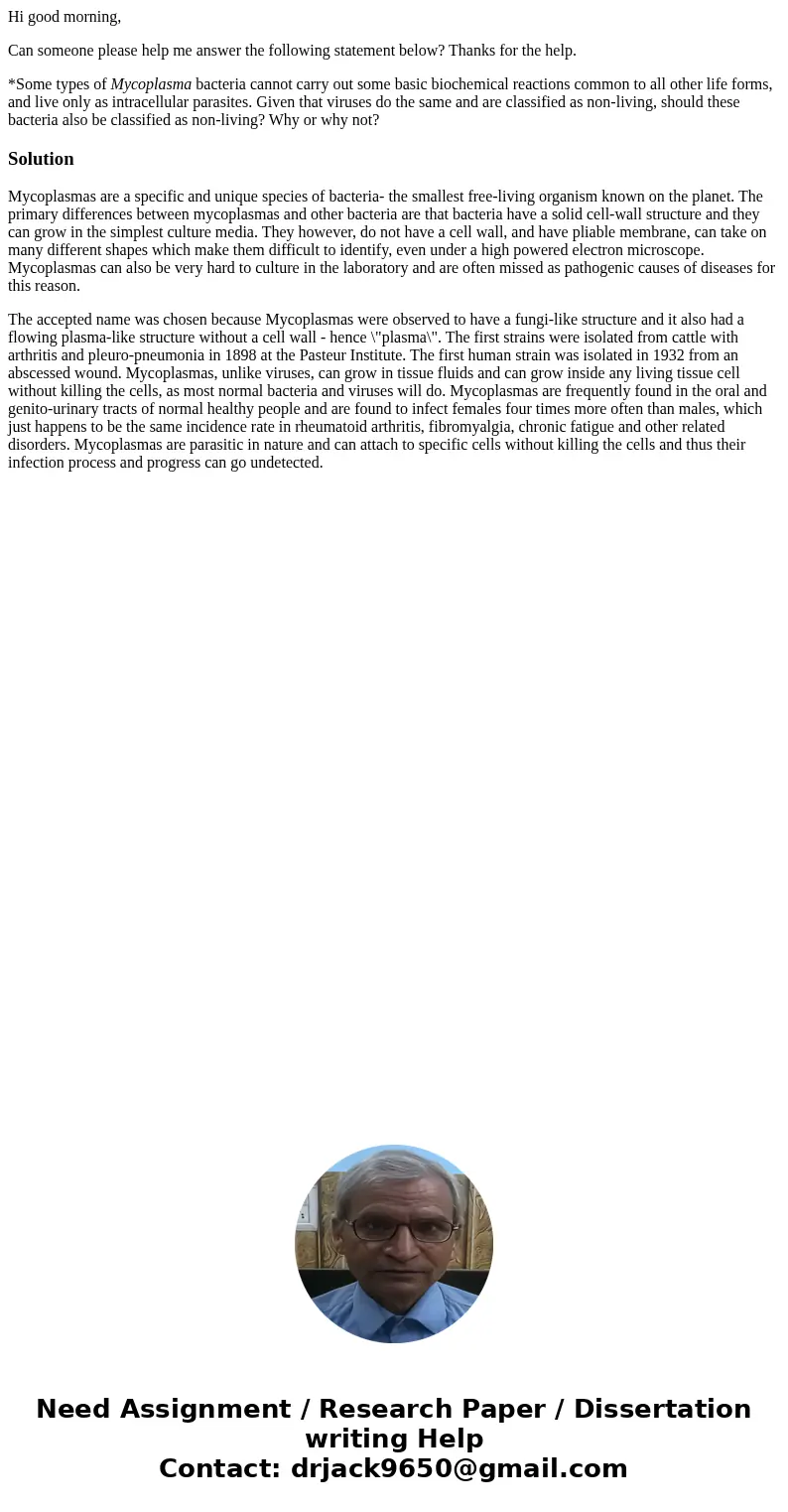Hi good morning Can someone please help me answer the follow
Hi good morning,
Can someone please help me answer the following statement below? Thanks for the help.
*Some types of Mycoplasma bacteria cannot carry out some basic biochemical reactions common to all other life forms, and live only as intracellular parasites. Given that viruses do the same and are classified as non-living, should these bacteria also be classified as non-living? Why or why not?
Solution
Mycoplasmas are a specific and unique species of bacteria- the smallest free-living organism known on the planet. The primary differences between mycoplasmas and other bacteria are that bacteria have a solid cell-wall structure and they can grow in the simplest culture media. They however, do not have a cell wall, and have pliable membrane, can take on many different shapes which make them difficult to identify, even under a high powered electron microscope. Mycoplasmas can also be very hard to culture in the laboratory and are often missed as pathogenic causes of diseases for this reason.
The accepted name was chosen because Mycoplasmas were observed to have a fungi-like structure and it also had a flowing plasma-like structure without a cell wall - hence \"plasma\". The first strains were isolated from cattle with arthritis and pleuro-pneumonia in 1898 at the Pasteur Institute. The first human strain was isolated in 1932 from an abscessed wound. Mycoplasmas, unlike viruses, can grow in tissue fluids and can grow inside any living tissue cell without killing the cells, as most normal bacteria and viruses will do. Mycoplasmas are frequently found in the oral and genito-urinary tracts of normal healthy people and are found to infect females four times more often than males, which just happens to be the same incidence rate in rheumatoid arthritis, fibromyalgia, chronic fatigue and other related disorders. Mycoplasmas are parasitic in nature and can attach to specific cells without killing the cells and thus their infection process and progress can go undetected.

 Homework Sourse
Homework Sourse